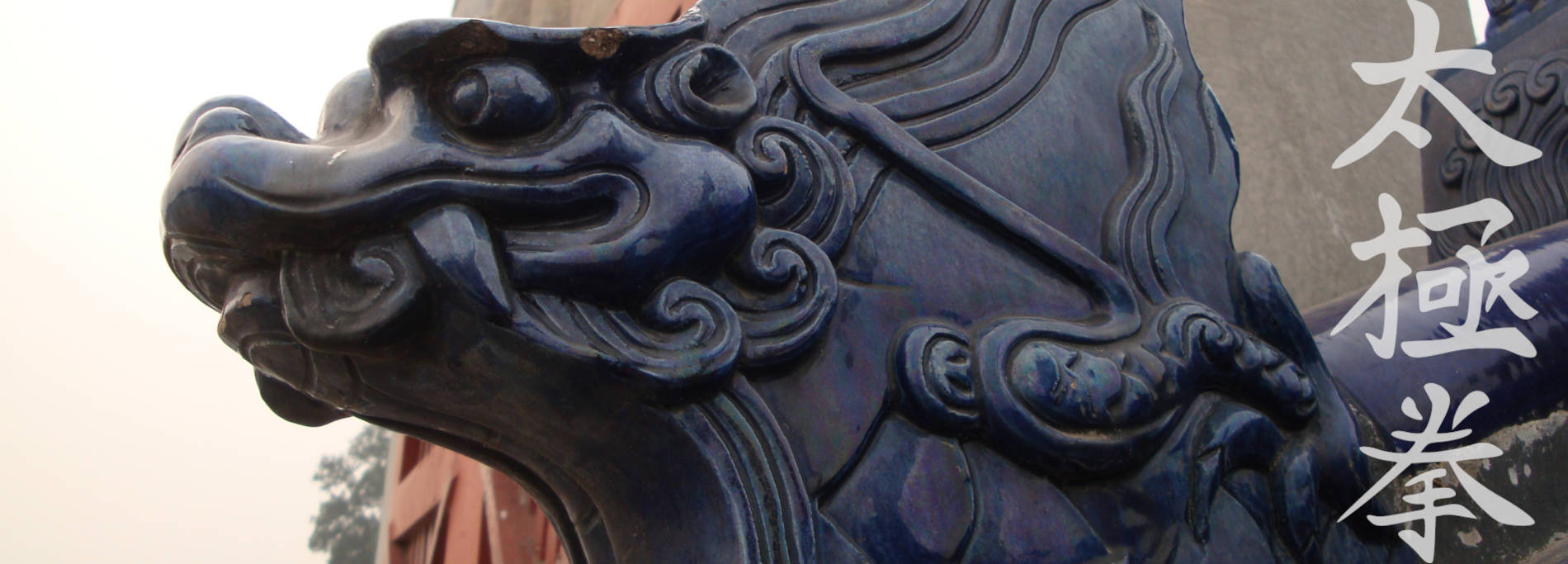By Chen Zhaokui and Chao Zhenmin, translated by Lo Juinn Cherng, courtesy by 陈瑜太极网, cytjw-cn (思雨)
This is a first of a short series of articles by Chen Zhaokui from manuscripts his son Chen Yu published in the book Chen Yu (2011). Taiji Rensheng - pp. 55-76.陈式太极拳的锻炼方法
Before the advent of modern weaponry like rifles and cannons, particularly in ancient societies, the utilization of weapons and the art of hand-to-hand combat flourished due to the demands of hunting, class struggles, and ethnic conflicts that frequently escalated into physical confrontations. These combat techniques were developed across various nations and cultures. Some evolved into specialized sports like boxing, wrestling, and fencing, while others formed into comprehensive systems encompassing a range of weapons and techniques for engaging opponents, as seen in the diverse martial arts traditions of China.
 Since all weapons are essentially extensions of the hands and feet, amplifying their effectiveness, and their movements are still primarily based on bodily motion, each martial art focuses primarily on hand-to-hand combat techniques in its training methods. Hand-to-hand training holds the greatest significance and occupies the largest proportion of training activities across martial arts disciplines, and it is therefore the main focus within the scope of this article.
Since all weapons are essentially extensions of the hands and feet, amplifying their effectiveness, and their movements are still primarily based on bodily motion, each martial art focuses primarily on hand-to-hand combat techniques in its training methods. Hand-to-hand training holds the greatest significance and occupies the largest proportion of training activities across martial arts disciplines, and it is therefore the main focus within the scope of this article.
Moreover, during the training process, it's crucial to balance effectiveness in mastering techniques with safety to prevent injuries. This naturally leads to the development of several steps:
A: Practicing Basic Movements Individually
This entails practicing various forms of martial arts techniques. Forms are the embodiment of effective movements in combat. Initially, they often consist of standalone techniques, which later evolve into interconnected sequences. Through form practice, one can begin to ensure that their movements meet the demands of combat, such as proper hand and foot placement, correct application of force, and maintaining balance.
Using the Second Road "Laojia" form of Chen-style Tai Chi as an example. In its opening sequences, each movement serves a specific purpose. Some have fixed applications, like "San Huan Zhang" used for seizing, "Shuang Bai Jiao" for sweeping, and "Zhi Dang Chui" for striking, among others. Then, there are those with versatile applications, such as "Dao Juan Gong," which can either pull back and control the opponent's force or advance to break it, or be used for joint locks or leg sweeps. "Yun Shou" can be utilized to protect the body with the arms or press against the opponent with the shoulder. In essence, the applications are embedded in the execution of the movements in each posture.
B. Fixed-pattern Push Hands.
After initially mastering the basic movements, it is not advisable to immediately apply them directly in combat scenarios. An intermediate training phase is necessary, known as practicing "fixed-pattern" push hands and similar activities. Through this phase, gradually mastering combat techniques from the local to the overall level, is an integral part of Tai Chi Chuan training, specifically in Chen-style Tai Chi Chuan.
Chen-style Push Hands encompasses various forms, including single-hand push hands, double-hand push hands, one-step advance-one-step retreat, three-steps advance-two-steps retreat, continuous advance and retreat, three-steps advance-three-steps retreat, free and continuous stepping push hands, as well as coordinated step push hands, among several others. The difficulty of these forms progresses sequentially. Each form of push hands also incorporates various counter techniques, leading to infinite variations (explained further below). Among them, the higher-level practice of push hands is closer to practical application of the art.
C. Solo Movement Drills and Sparring
Once proficient in fundamental movements and pushing hands techniques, practitioners can progress to free sparring. At this stage, they are liberated from the constraints of foundational training and can partake in combat exercises closely mirroring real-world scenarios. Essentially, this entails the holistic application of previously acquired skills and techniques, without the need for distinct categorization. However, to maximize the effectiveness and ensure a complete exertion of force, there are also additional supplementary exercises. In Chen-style Tai Chi, this involves single-movement practice, which comprises numerous movements for generating and redirecting force. This training, undertaken once the movements are executed correctly, aims to refine the generation and redirection of force, making them more precise and rapid, in line with the demands of combat. Moreover, exercises like twisting a stick, striking a wall, or hitting a pillar are effective methods for enhancing explosive force and can be integrated accordingly.
As for the integration of martial arts with health practices such as qigong, and the emergence of dance-like developments due to performance requirements, these are also noteworthy topics for research and discussion in the realm of martial arts training. The former will be briefly touched upon in the following text, while the latter, due to its less direct relevance to this article, will be omitted.
Bibliography:
Chen Zhaokui and Chao Zhenmin (2011). Chenshi Taijiquan Duanlian Jingyan Tan. In: Chen Yu: Taiji Rensheng (pp. 55-76).
Contact details Beijing:
官方微信平台:家传功夫架
官方网站:陈瑜太极网
官方微信号:cytjw-cn (思雨)

